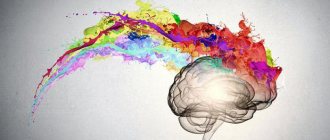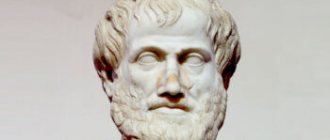Behaviorism: The Science of Behavior: Freepick What Mysteries Can Psychology Reveal? How does behavioral science predict a person's actions and behavior in different situations? Behaviorism provides the keys not only to understanding, but also to managing human behavior. Let us briefly consider the basics of this trend, as well as its most prominent representatives.
Psychology as a science of behavior briefly
Psychology has many facets, and the subject of psychology is understood differently depending on its direction. Thus, behaviorism studies the reactions of individuals to various events, that is, in fact, it is the science of human behavior.
How and why did behaviorism arise? It is worth briefly saying that this trend is quite young, it originated a hundred years ago and has become a radically new psychological approach. His task was defined as follows: the study of human behavior from the point of view of reflexes. The methodological apparatus of the new direction included observation and analysis.
Psychology as a science of behavior has become a kind of protest against the speculativeness of conclusions and descriptions based on metaphors. The new direction placed emphasis on practical rather than theoretical psychology.
Here's an example of how behavioral science works. John Watson, the founder of behaviorism, believed that people's reactions to various actions could be predicted. He confirmed this with the following experiment:
- A small group of children gathered for the experiment. They brought rabbits.
- The kids had a natural desire to pet the animals.
- When trying to do this, the child received a weak electric shock.
- The next day, when they saw the rabbits, the children began to cry, as they remembered the previous experience.
- The scientist gave them sweets, continuing to keep the rabbits nearby.
- Gradually the distance shortened, and at the end of the experiment the children again willingly played with the animals.
Thus, according to the theory of behaviorism, human behavior is determined primarily by unconditioned reflexes. Knowing the incentives and reactions of a person to various factors, his behavior can be predicted and, accordingly, his personality can be controlled.
The Human Brain and Behavior: Freepick
Over the past century, several trends have emerged within behaviorism:
- Methodological (Watson's behaviorism). It assumes that only public events (a person’s behavior) are amenable to objective observation, and his personal feelings and thoughts can be ignored.
- The radical (Skinner's behaviorism) direction takes into account, along with external ones, also internal events in a person's life. It is believed that changes in the environment affect both them and their behavior.
- Teleological (target). Engaged in objective observations, contrasting them with the cognitive process.
- Theoretical behaviorism takes into account internal (invisible) processes.
- Biological (behavioral systems theory) focuses on conscious and unconscious processing of data.
- Psychological, which focuses on methods of practical control of human behavior.
In the modern world, behaviorism has found wide application. He is especially favored by, for example, sales managers and politicians who are interested in this knowledge. The method is also used by practicing psychologists to help people fight phobias and fears.
But this trend also has its drawbacks. Its basis is the general reactions of a person; it does not take into account the temperament and characteristics of his character. For this reason, manipulating the behavior of others is often much more difficult, and reactions are difficult to control.
Perception
Perception is a cognitive process that forms the subject’s picture of the world. A mental operation that reflects an object or phenomenon that affects the receptors of the sense organs. Perception is a complex function that determines the reception and transformation of information and forms a subjective image of an object for the subject. Through attention, a whole object is discovered, its special features and content are highlighted, and a sensory image is formed, i.e. comprehension occurs.
Perception is divided into four levels:
- Detection (perceptual action) – image formation;
- Discrimination (perceptual action) is the perception of the image itself;
- Identification (recognition action) - identification of an object with existing images;
- Identification (identification action) – categorization of an object.
Perception also has its own properties: structure, objectivity, apperception, selectivity, constancy, meaningfulness. More information about perception can be found in the articles “Sensation and Perception” and “Mental Processes: Types and Brief Description.”
Psychology as a science of behavior: representatives
The primacy in the justification and development of behaviorism belongs to the American scientist John Watson. In 1913, the researcher made a report in which he clearly outlined the essence of the new theory.
The main finding was that a stimulus elicits a specific response. According to Watson, in order to understand the characteristics of an individual, it is necessary to observe him. The right approach helps to predict a person’s reactions to various actions. The basis of the direction was the physiological theory of reflexes.
Founder of Behaviorism John Watson: Gettyimages
The following scientists agreed with Watson and supported his ideas:
William Hunter
This scientist is responsible for the substantiation of the theory of delayed behavior. Its meaning is that a stimulus can be given to a person now, and a response can be received later. Hunter conducted his experiments on monkeys:
- placed a box of bananas in the room;
- fenced it off with a screen;
- observed the reactions of animals;
- after a while he rewarded the primates with fruit.
Carl Lashley
The relationship between stimuli and the central nervous system was studied by Karl Lashley. The scientist conducted experiments with animals: he taught them certain skills, and then removed parts of the brain. This made it possible to determine the interchangeability of brain regions.
Burress Skinner
Contributed to the development and popularization of behaviorism:
- Developed the theory of operant conditioning. In it, the scientist substantiated that behavior causes changes in the environment, which subsequently shape behavioral characteristics.
- Contributed to the development of programmed learning.
- He wrote fiction and journalistic works about behaviorism.
Skinner confirmed his theoretical work experimentally using functional analysis. Their goal is to study, predict and control human behavior by managing the environment.
Edward Thorndike
The scientist has a theory according to which consciousness is considered as a system of connections united by associations. Thorndike proposed the law of exercise and effect. It is explained as follows: the more repetitions of an action are performed, the more strongly it is imprinted in consciousness.
Edward Thorndike: Facebook/@afender2017
Edward Tolman
Tolman developed the standard theory of behaviorism, which was proposed by Watson, and began to develop cognitive theory. According to his approach, stimulus and response are separated by special gestalt signs, the basis of which is cognitive maps.
He proved his theory with experiments on rats. They could find a new path to the feeding trough if the previously mastered path for some reason turned out to be inaccessible.
Neil Miller
The scientist was engaged in research in behavioral psychology. The behaviorist concept was used in the study of concepts such as motivation, aggression, frustration, as well as in conflict management and psychotherapy. The researcher was interested in the physiological mechanisms that underlie drives and reinforcements, brain electrophysiology, and psychopharmacology.
Psychology is one of the most mysterious sciences, because the subject of its knowledge is the inner world of man. The mysteries of psychology have been solved by entire generations of scientists. New discoveries by experimenters not only bring answers, but also become a source of questions.
Psychology as a science of behavior remains relevant. It continues to develop and discover unknown facets of the human psyche. But still, accurately predicting human behavior remains a fantastic task, since it is influenced by many factors and not all of them can be assessed and determined in advance.
Original article: https://www.nur.kz/family/self-realization/1767841-psihologia-kak-nauka-o-povedenii-ucenye/
Literature
- Galperin, P. Ya.
Introduction to psychology. - Moscow: Book House "University", . - Luria, A. R.
Lectures on general psychology. - St. Petersburg: Peter, . - General psychology. In 7 volumes - Moscow: Academy, .
- Petrovsky, A. V., Yaroshevsky, M. G.
Fundamentals of theoretical psychology. - Moscow: Infra-M, . - Nosov, N.
Virtual psychology. - M.: "Agraf", 2000. - 432 p. - Karandashev, V. N.
Psychology: Introduction to the profession. - Academy, Smysl, 2009. - 512 p. — 3000 copies. — ISBN 978-5-7695-6630-1, ISBN 978-5-89357-227-8. - Maklakov, A. G.
General psychology. - St. Petersburg: Peter, 2002. - 592 p. — ISBN 5-242-00062-5. - Fromm, E.
The human soul. - M.: Republic, 1992. - 430 p. — ISBN 5-250-01511-5 - Parygin, B. D.
Public mood / B. D. Parygin. - M.: Mysl, 1966. - 328 p. - Vygotsky L.S. Pedagogical psychology. M.: Pedagogy, 1991.
Steven Pinker. Blank sheet. Human nature. Who and why refuses to recognize it today = Steven Pinker. The Blank Slate: The Modern Denial of Human Nature. - M.: Alpina Non-fiction, 2018. - 608 p. — ISBN 978-5-91671-783-9.
Methods of psychological influence on people
Society consists of people who constantly communicate with each other. Consciously or not, they all influence each other. There are various ways to influence the environment.
Methods of exposure to humans:
Contagion is a method based on the transfer of emotions from one individual to another. If someone panics or cries, then everyone's mood deteriorates. You can be “infected” with both negative and positive emotions, for example, laughter, joy, fun. Suggestion - an individual is inspired to act as someone wants. Suggestion occurs through words, gestures, and actions. Each individual has different suggestibility. Suspicious people and children under 13 years of age are more easily suggestible than independent individuals. Persuasion - an individual is persuaded to act one way and not another through logical thinking. The higher a person's intelligence, the harder it is to convince him
In the process of persuasion, it is important to instill trust. If the interlocutor doubts the veracity of the arguments, it is impossible to convince him of anything. Imitation - consciously or unconsciously an individual tries to copy the behavior of another person
Typically, role models are successful, famous and rich individuals.
Many people use another method of influencing an individual. Its name is manipulation. Using this method, the manipulator gets what he wants, while the opponent retains the illusion of independently made decisions. Aristotle also said that the success of influence depends on who says what to whom.
Personality psychology is a fascinating science. Anyone can understand its basics. True, not everyone is able to put their knowledge into practice. An experienced psychologist will help you understand all the nuances of the psychological discipline.
Psychology is designed to teach people how to behave correctly
What worries a person who gets into a team in the first place? Will he be able to coexist without conflicts, will he be comfortable working side by side with new people and will he be able to unite the entire team. Any team has a leader, competition and cooperation are developed, and the microclimate in the team will depend on how relationships are built.
Thanks to psychological science, you can understand why panic occurs, how it can be prevented, what actions need to be taken to avoid unnecessary casualties in fires and crashes, and how to behave correctly in emergency situations
It is important to understand how much team cohesion is developed in order to perform a certain action. In a school classroom, it is important to know who can become an organizer and leader.
It is very important that this person has positive personality traits. In order for a teacher to properly organize the educational and educational process, he must know the basics of psychology of the age with which he works. Psychology provides great assistance in these important issues of pedagogy and education. She can give the necessary advice on how to behave in different situations.






